You can either pay the dealer to put new ball joints in and pay $60/hr plus parts or, if you have some basic mechanical skills, the right tools and a weekend to set aside, you can do it yourself. I was told the ball joints in my 2005 Dodge 2500 needed to be replaced when the truck had just over 50,000 miles. I do a lot of highway driving and rarely tow anything big, so that will tell you how easy these things wear out. Tightwad that I am, I shunned the dealer and decided to do it myself. Follow along as I walk you through how to do it yourself and avoid the pitfalls. Oh yeah, and find out what blew my plans right out of the water.
First off, in addition to a general set of hand tools Ė including standard and metric socket sets, standard and metric wrenches, screwdrivers and pliers Ė here are some specific tools youíll need that you wonít normally find in the typical toolbox:
Ball Joint Press with 4x4 adapters (auto parts stores usually rent these out)
1 11/16 socket
30mm wrench/socket
Pickle fork
½-inch impact (you donít need air tools, but itís a huge help)
Jack stands
Penetrating oil such as PB Blaster or Liquid Wrench
Service manuals for torque specs
Letís Get Dirty!
First, bust all the lug nuts loose on the wheel on the side you want to do first. Then, jack the truck up and place it on jackstands. Make sure the side you want to work on is always slightly higher just to make sure the fluid in the differential stays put. Remove the front wheel.
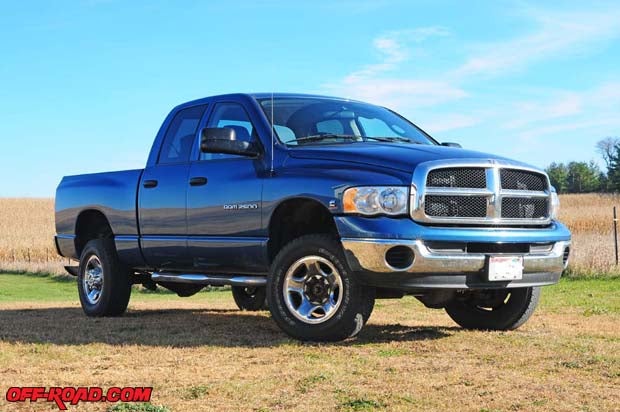
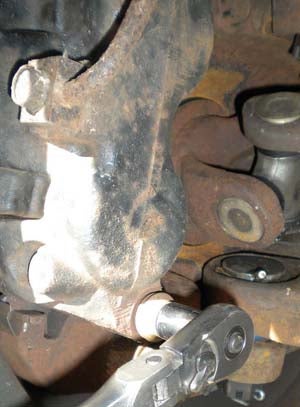
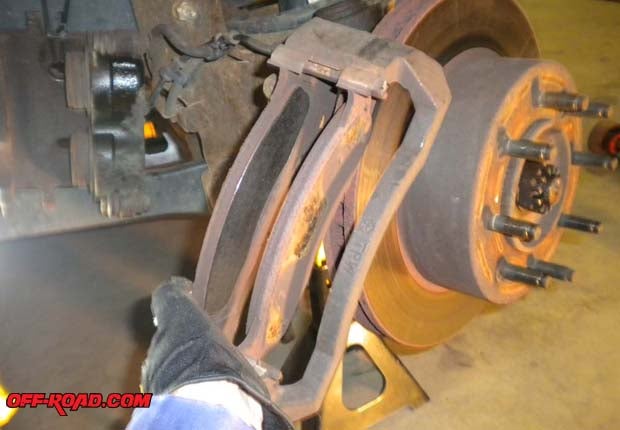
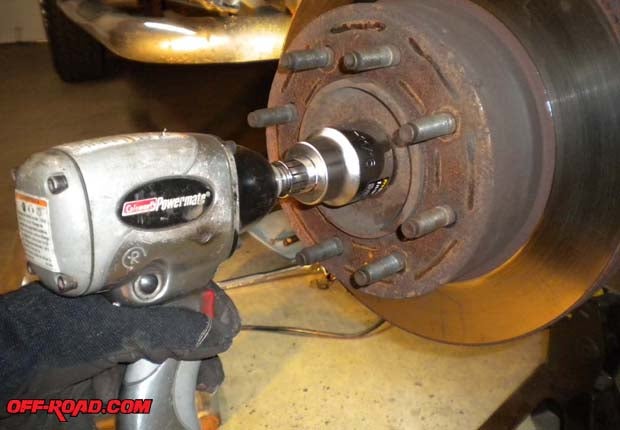
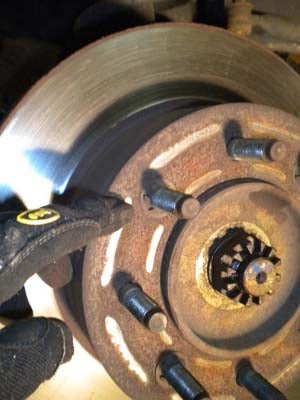
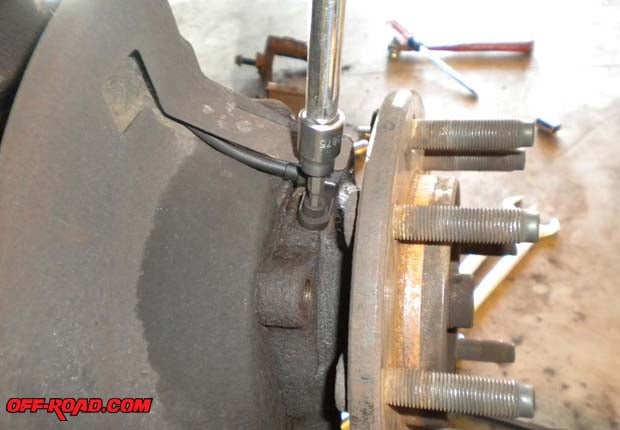
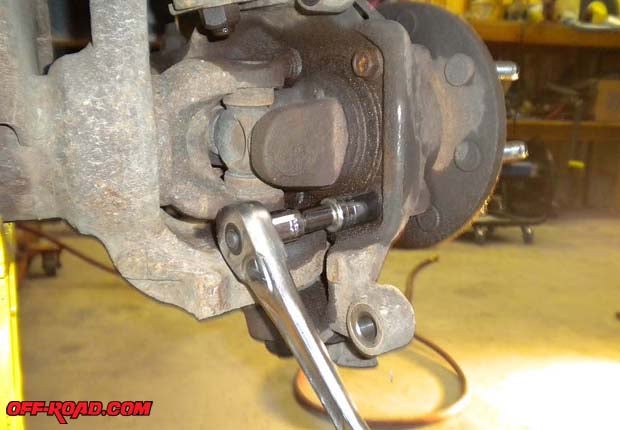
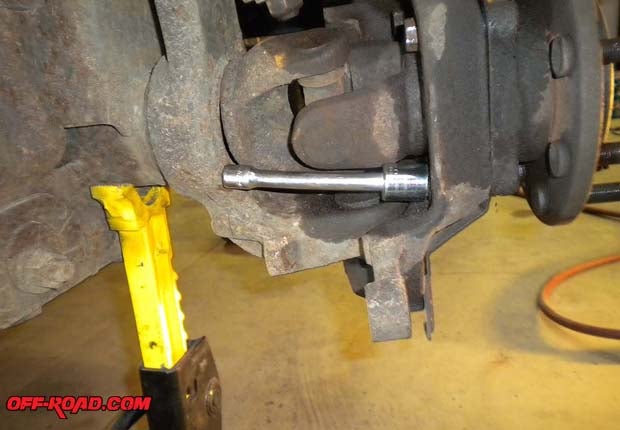
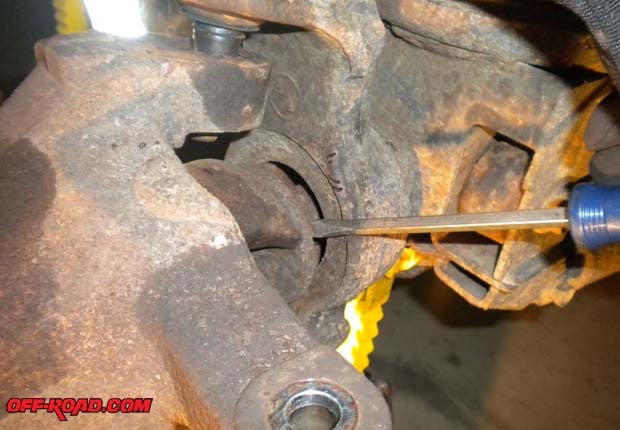
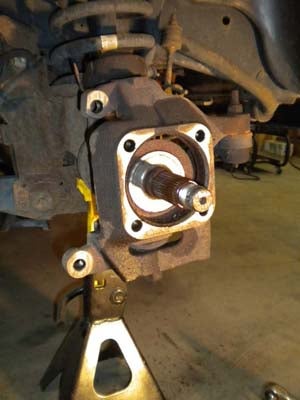
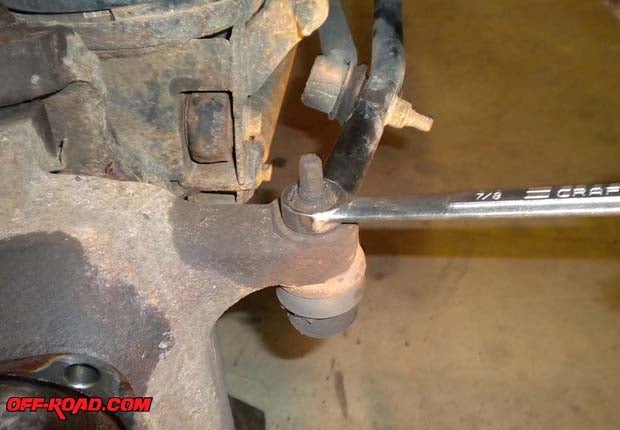
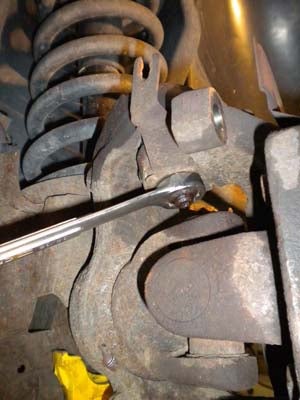
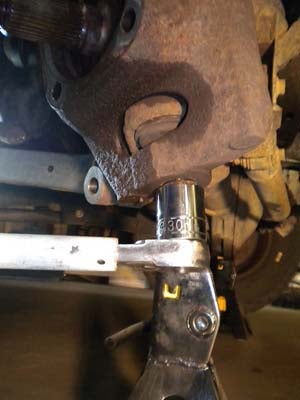
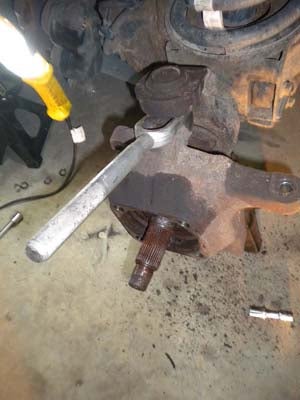
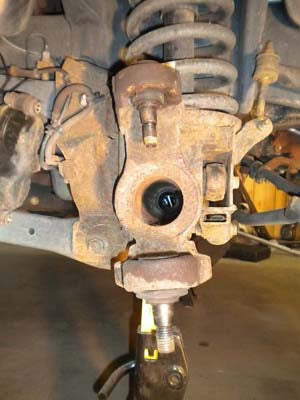
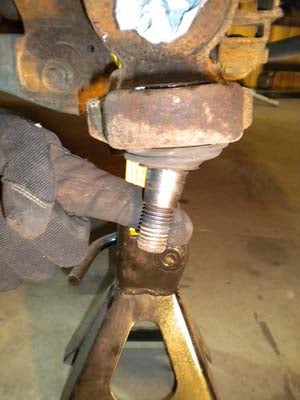
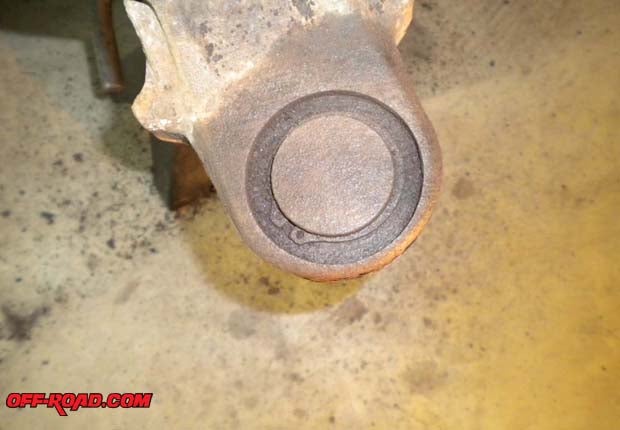
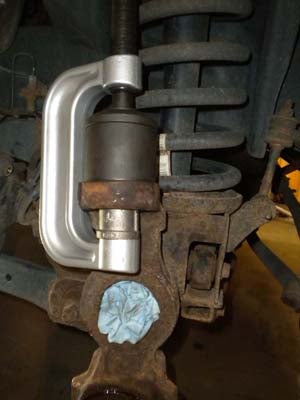
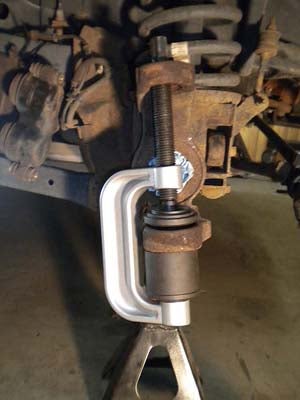
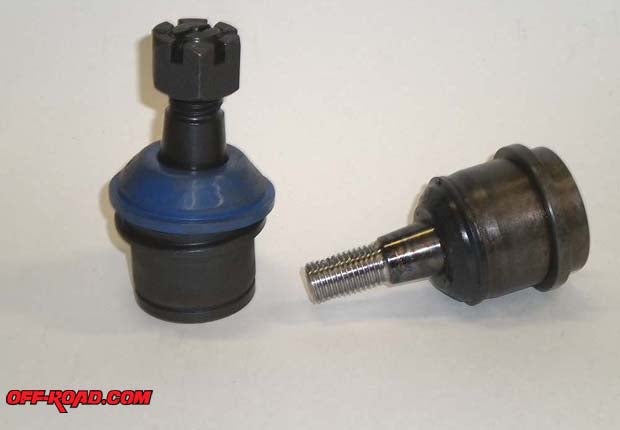
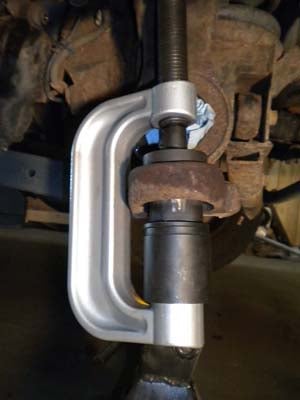
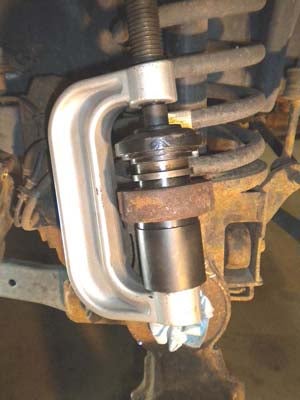
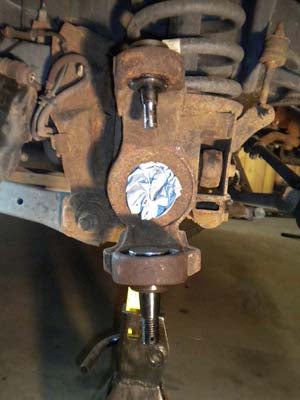
Now youíre ready to put it all back together. Install the knuckle on the ball joint studs and tighten them finger tight, make sure you put the bracket for the anti-lock brake sensor cord on the upper stud. Smear some grease on the end of the axle shaft and slide it in, being careful not to damage the seal inside the axle. Install the hub and brake disc dust shield and tighten it down good, being careful to align the end of the axle shaft so it doesnít get pinched. Install the axle bit and tighten it down by hand, youíll torque it later. Install the anti-lock brake sensor and re-route the cable in its original routing. Bolt on the caliper mount and brake pads and tighten it down then install the caliper. You might have to compress the caliper pistons with a big c-clamp to get it back on. Connect the tire rod and tighten it to 40 ft-lbs and then tighten it another 90-degrees.
Stick a floor jack under the hub part of the rotor (not the braking part) and jack it up enough so there is some weight on the suspension. Torque the upper ball joint to 40 ft-lbs and the lower to 100 ft-lbs. Iím not sure how youíre supposed to get a torque wrench on the upper ball joint so I just tightened it down and called it good. Install the cotter pins.
Now you can put the wheel back on and tighten the lugs. Set the truck down on the ground and torque the lugs to 145 ft-lbs. Torque the axle nut to 263 ft-lbs. Most torque wrenches wonít go that high so I just put a pipe on a half-inch ratchet and stood on the end of it. Install the cotter pin.
Take the truck for a short drive, like around the block or something, listening and feeling for anything out of the ordinary. After the short drive, re-torque the lug nuts and give everything a once-over. You should feel a huge difference in how the front end feels, especially if your ball joints were as worn-out as mine. Be sure the got the front end aligned as soon as possible.
A few notes on the write-up and my experiences:
ē I listed torque values for a few fasteners, the rest (like the hub and caliper mount) I just tightened down really good.
ē The driver side hub would not come out with the steering on my truck. The knuckle wonít come off without first taking out the driveshaft and the driveshaft wonít come out unless the hub is off. Faced with this problem, I figured I could do one of two things: a. put it back together and pay someone to fix it, or b. cut it apart. I decided to dive in and cut the studs off the ball joints with an angle grinder then I broke the knuckle loose with a pickle fork. With no studs on the ball joints I was able to slide the whole knuckle/hub assembly off the axle shaft. To get the hub out I ended up putting the whole thing in a 10-ton press. The press wouldnít budge it so I heated the knuckle with a torch and it finally popped loose. I talked to a long-time service tech and he said heís never seen one that wouldnít come loose with the steering trick, but a search on the Web brought up other guyís who had the same problem I did.
ē Snap-on makes a tool for pushing the hub out (instead of using the socket/extension); it costs around $70-80.
ē I consider myself a fairly experienced shade tree mechanic and it took me almost seven hours to do the side where the hub came loose. But I also put new u-joints in the axle shafts.
Thereís nothing like the satisfaction of doing a job yourself. And thereís nothing like saving $1,000 or so in labor costs by doing a job yourself. Plus, itís a feather in your cap to be able to tell your buddies you tore your front end down and rebuilt it yourself.


 Your Privacy Choices
Your Privacy Choices